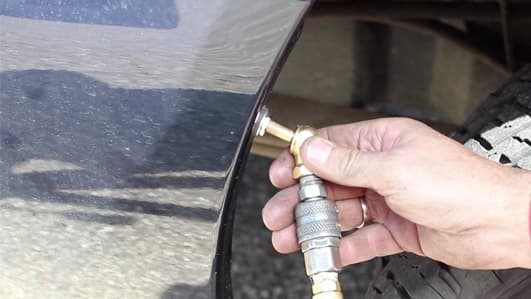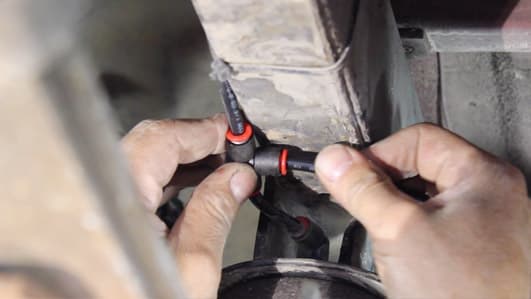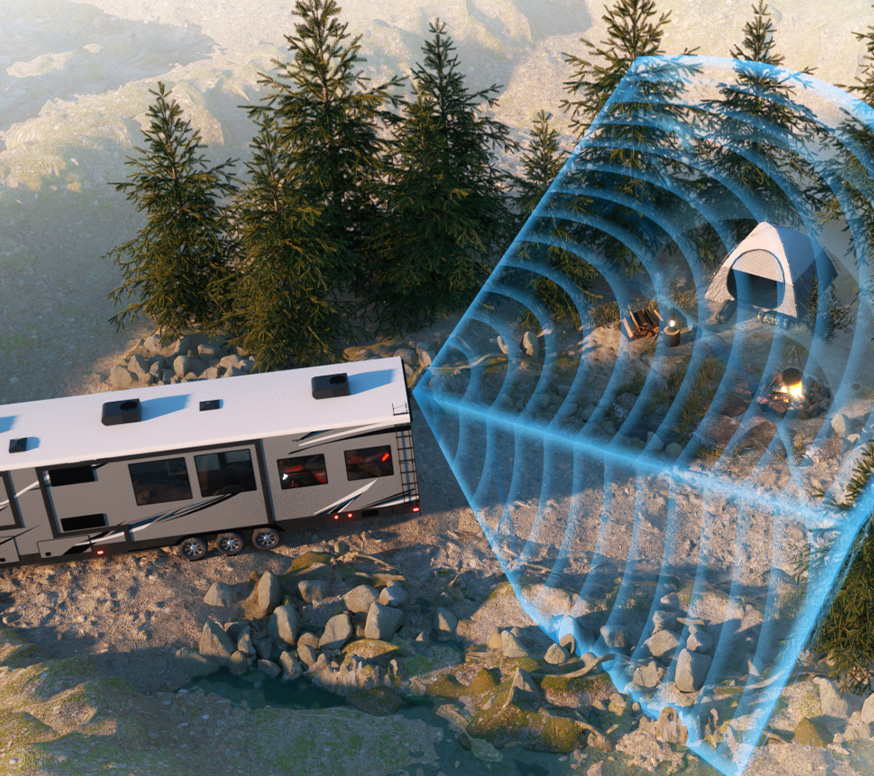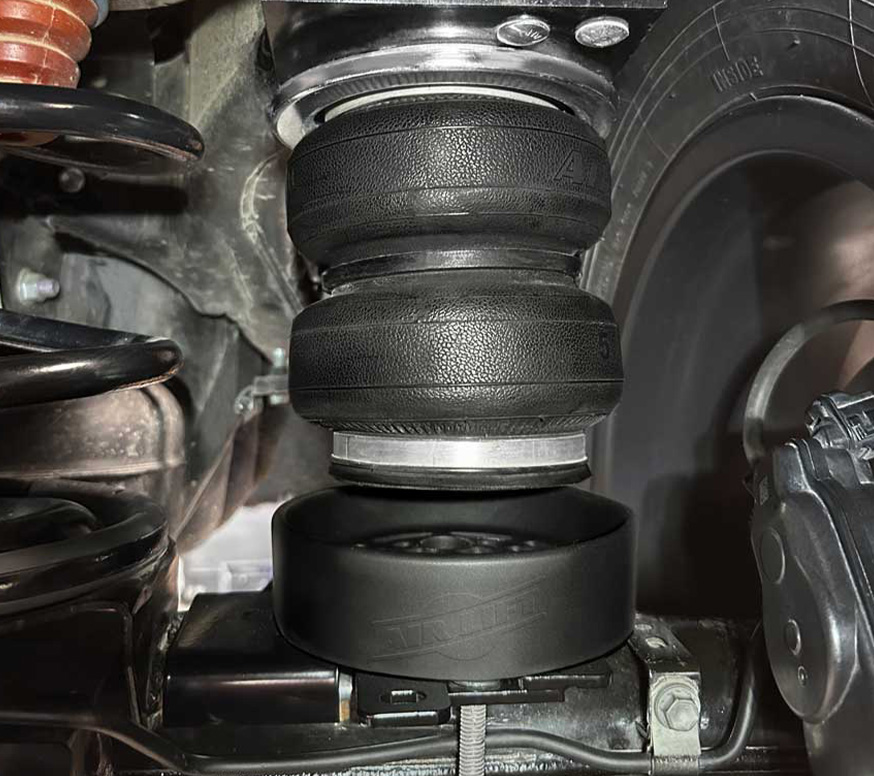
How To Route Air Line
3/10/2014
When installing an air suspension kit, one of the final steps is routing the air line. In a basic air bag suspension setup, air line is typically run from each air spring to a Schrader valve mounted in a convenient location towards the rear of the vehicle.
Below are the basic steps you’ll need to follow when routing air line to/from your air springs:
Installing an On-Board Air Compressor System?

This is the first question you’ll need to answer is whether you also going to be installing an on-board air compressor system.
These compressor systems allow you to easily inflate and deflate your air springs with the touch of a button. Air Lift offers several on-board air compressor systems depending on the features and convenience you desire.
Dual-Path vs. Single-Path Routing
If you’re installing an on-board air compressor system, this question may already be answered for you.
Though the terms are slightly confusing, single-path simply means “single pressure,” meaning that both air springs will be inflated or deflated to the same pressure. Dual-path systems, as you have probably guessed, means that you have the ability to set your air springs to two separate pressures, prefect for hauling uneven or top-heavy loads.
Think of it this way – single-path means that you’ll have a single inflation valve in which to inflate/deflate both air springs. Dual-path means you’ll have two inflation valves in which to inflate/deflate each air spring separately.
Installing the Inflation Valve(s)

Whether you decide to install an on-board compressor system or not, we always recommend installing an inflation valve so you can manually inflate or deflate the springs. To install the Schrader valve(s), choose a convenient location for mounting the valve. Some popular locations include:
- The wheel well flanges
- License plate recess in the bumper
- Under the gas cap access door
- Through the license plate itself
When choosing a location, make sure there will be enough clearance around the inflation valve for an air chuck.
Drill a 5/16” hole where you plan to mount the inflation valve(s).

If installing a single-path setup, find a desired tee location on the frame rail or cross member and determine and cut adequate length of air line to reach the tee from the left and right air springs.
If installing a dual-path setup, cut the air line included in your kit into two equal lengths.
When cutting air line, make it a clean square cut with air line cutter, a razor or sharp knife. Read our article on how to properly cut air line for more tips.
Install the inflation valve(s) in the previously drilled hole(s) using the nuts and washers included in your air spring kit (refer to your installation manual for detailed information).
Routing the Air Line
Attach the air line to the stem (Air Lift 1000 and Air Lift 1000 HD applications) or push-to-connect fitting (RideControl & LoadLifter-series applications) of each air spring and route to the tee (if single-path) and then to the inflation valve(s).
Run the air line along the frame rail and/or cross members, sheltering the air line from any potential road debris when possible.
Keep at least 6” of clearance between the air line and heat sources such as exhaust pipes, mufflers or catalytic converter. Avoid sharp bends and edges. Use the plastic tie straps included in your kit to secure the air line to fixed non-moving points along the chassis. Be sure the straps are tight, but not overly as to pinch the air line. Leave at least 2” of slack to allow for any movement that might pull on the air line.









